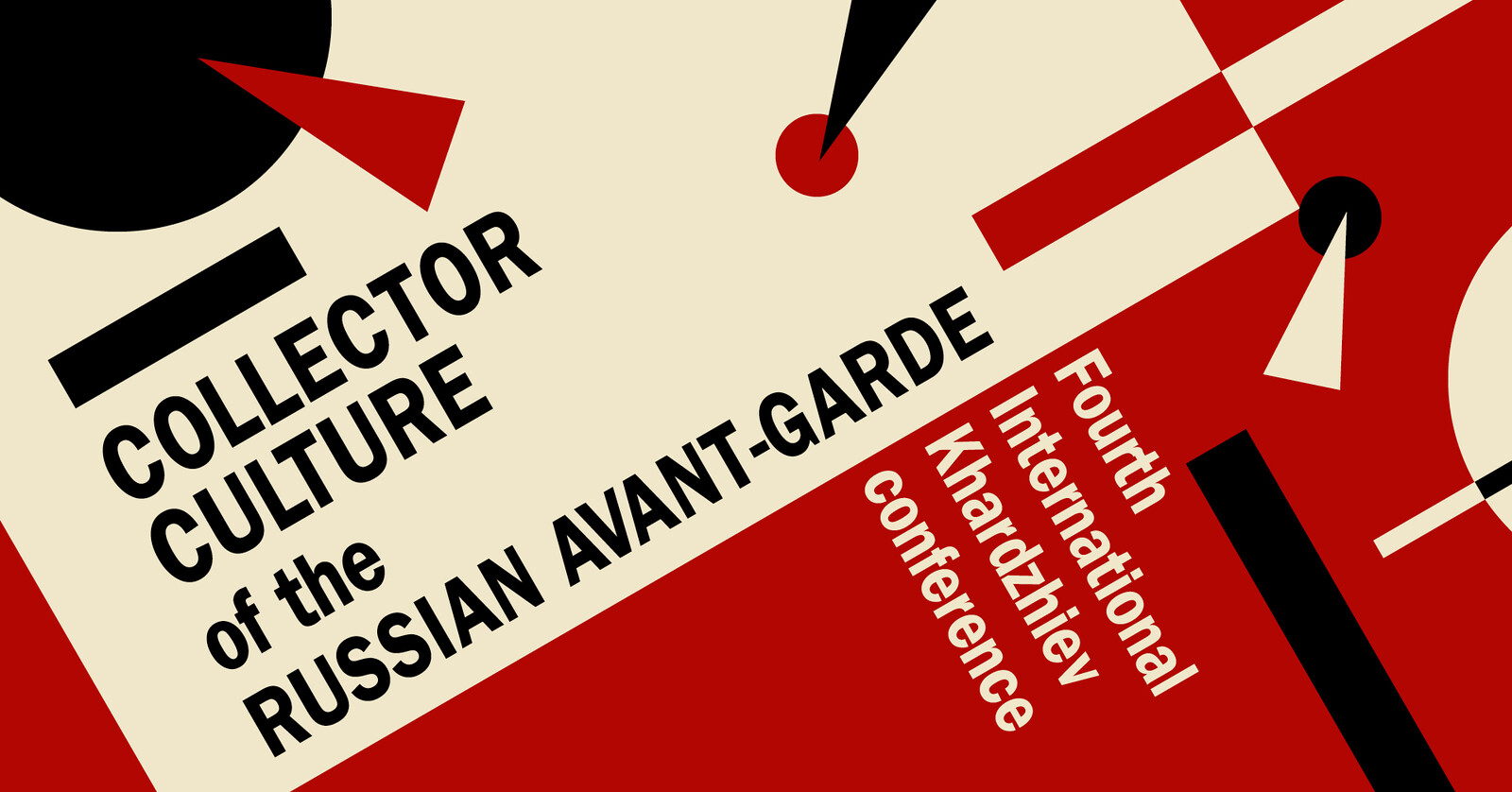October 22–23, 2021
The fourth International Khardzhiev Conference, under the title “Collector Culture of the Russian Avant-garde,” aims to discuss, among other topics, whether new archival theories can broaden or change our perspective on Soviet collections of modernist art, how official and unofficial collecting practices interacted in the various historical timeframes in the Soviet Union or how collectors mediated and fostered the continuity, legacy and lineage of Russian modernist art forms.
The conference is hosted by MOMus-Museum of Modern Art-Costakis Collection, in Thessaloniki, Greece, in collaboration with the Khardzhiev Foundation and the Stedelijk Museum Amsterdam, in a hybrid form, both onsite and online via livestreaming (see below).
George Costakis and Nikolai Khardzhiev are leading names within a broader collector culture in the ex USSR that flourished especially during the Russian Thaw and the post-Stalin epoch of the 1950s and 1960s. At the time, several collectors collected art thus playing a major role in the preservation of cultural heritage that would otherwise have been largely lost. They purchased and preserved frowned-upon Avant-garde art, often under uncustomary circumstances, as well as art works that were labelled “formalistic,” or were considered undesirable for other reasons, such as art by former emigrants or art with a religious connotation.
Costakis, Chudnovsky, Shuster, Semenov and others collected Avant-garde art as part of broader collections of modernist art, which included works by post-impressionists, symbolists and early cubists. Their collections also played a major role in the rise of so-called unofficial art or nonconformist art—firstly, because they acquired this nonconformist art, but also because they allowed contemporary artists access to their collections and thus offered access to an Avant-garde culture that was absent in museums. These collectors therefore also played a role in the connection between the Avant-garde and the culture of the non-conformists. The same goes for the unique collection of mainly post-Avant-garde art brought together by museum director and collector Igor Savitsky for the Nukus Museum of Art in Uzbekistan.
In a broader sense, this collector culture is a typical phenomenon of the period of Thaw (and later of Stagnation) with its typical atmosphere of limited liberties, an aspiring civil society, combined with ongoing political repression and ongoing politicization of aesthetics.
How did collectors mediate and foster the continuity, legacy and lineage of Russian modernist art forms?
Find the programme here.
The conference will be held in English, in a hybrid form, onsite and online via livestreaming.
No registration fees applied, in both cases.
Onsite attendance
Venue: MOMus-Museum of Contemporary Art-Macedonian Museum of Contemporary Art and State Museum of Contemporary Art Collections
Auditorium ‘Xanthippi Xoipel’
154 Egnatia Av. (TIF-HELEXPO premises)
Thessaloniki, Greece
Due to anticovid measures, prior registrations are required. Visit here.
Online attendance/livestreaming
Via the conference’s website, facebook and YouTube.
Conference Scientific committee
Angeliki Charistou (MOMus-Museum of Modern Art, Thessaloniki)
Frank van Lamoen (Stedelijk Museum Amsterdam)
Lyubov Pchelkina (State Tretyakov Gallery, Moscow)
Sjeng Scheijen (Khardzhiev Foundation, Amsterdam)
Maria Tsantsanoglou (MOMus-Museum of Modern Art, Thessaloniki)
In parallel, presented in MOMus-Museum of Modern Art-Costakis Collection
October 22–23, 2021 / Documentary screening, Khardzhiev: The Last Russian Futurist by Liliya Vyugina
October 22, 2021–January 16, 2022 / Exhibition, Kazimir Malevich: From the Khardzhiev Foundation
Until January 16, 2022 / Exhibition, Ivan Kliun: Transcendental landscapes. Flying sculptures. Light spheres
Until February 20, 2022 / Exhibitions, Stefan Canham: The 27 and Sabine Höpfner: Kammer in the frame of the Thessaloniki Photobiennale 2021.

